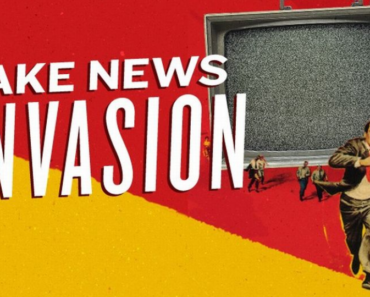Having a master’s degree in cyber information security, with a concentration in digital forensics, has its advantages. One of the things we were taught in school was how to check and vet our sources. In this day and age of info wars, we continue to see more and more people fighting with one another over “facts”.
The 2016 election was a vicious campaign. Trump supporters called Sanders a crazy socialist, while Hillary supporters referred to Bernie’s supporters as “Bernie Bros”. Meanwhile, the alt-right was claiming that the Clinton Foundation was ripe with scandals, including one that associated her with pizza and a satanic pedophilia ring. Of course, we all know people had plenty to say about Trump as well.
For months, I watched family members and friends fight with one another over social media sites like Facebook. People would grab articles from all kinds of sources, trying to prove that their opponent was a fraud or a criminal. In many cases, it became a war of memes. The more impulsive folks would pass around unverified memes as some sort of “proof” that the other candidate was some demonic devil, while their candidate was the only true hope for America.
So with all this misinformation out there, how does one find out if a source is credible or not? Fortunately, a little common sense, along with a little cyber sleuthing, can help establish the credibility of a source.
From a practical point of view, the first thing we can do is do a google search for “unbiased news sources”. The PEW research center did a study called “Trust Levels of News Sources by Ideological Group”, that ranks the most trusted and distrusted news sources. The link to the research is here: http://www.journalism.org/2014/10/21/political-polarization-media-habits/pj_14-10-21_mediapolarization-01/ . Notice how these results are polarized? The best way to choose, in my opinion, is to choose the source that is the most trusted by BOTH ideological groups. In this case, the Wall Street Journal was the most trusted source. I personally like this website called AllSides, which gives the story from many angles using a patented bias rating system: https://www.allsides.com/ . Here is another great source for spotting fake news: http://libguides.hccfl.edu/fakenews/evaluatingsources .
And don’t forget, if there is a debate over something like a new health care bill, read the bill yourself. Watch the congressional debates on C-Span, and read white papers and official government documents. Don’t just take the word of a radio host who says he has read the white papers. Remember, he has an agenda too. If it’s a debate about climate change, ask yourself if this website is cherry picking data to substantiate a false claim. Read the scientific research yourself. And if you are researching about a candidate, go to their website and see the platform they propose. See if that is consistent with what their opponent is claiming about them.
Of course there are also websites like Snopes, Factcheck.org, Politifact.com, and the Washington Post’s Factchecker, that help verify the authenticity of a story. But unfortunately, conservatives often claim that these sites are biased and controlled by the left. “Who checks the fact checkers?”, you may cry. That is an excellent point. This is where a little cyber sleuthing comes in handy.
A while ago, it was determined that a bunch of fake news was being generated by teenagers coming from places like Macedonia, who were profiting from spreading misinformation. As reported, social media giants such as Facebook were taking steps to combat these fake news sites. If you ever want to check for yourself whether a website is legit, there is a very popular tool called “WhoIs”. As stated by Wikipedia, “WHOIS (pronounced as the phrase who is) is a query and response protocol that is widely used for querying databases that store the registered users or assignees of an Internetresource, such as a domain name, an IP address block, or an autonomous system, but is also used for a wider range of other information. The protocol stores and delivers database content in a human-readable format”.
If you have a computer, you can open up the command line terminal and type “whois” and then the name of the URL in question. By law, websites are required to provide legitimate information. If the website in question is blocking the whois query, or the information comes up fraudulent, or if it protected by an anonymous proxy, that is usually a telltale sign that the website is fake news.
However, if you are not very computer savvy, there are websites such as www.whois.com that will do the work for you. Even if the site is legit, you can often learn something about the person behind the website because it gives their name and address, email, as well as other contact information. Once you know this information, you can use google to find out more about that person or company the website is addressed to.
But sometimes, google is not enough. If your really want to dig deep into a person or their company, you can use search engines such as this one: http://search.carrot2.org/stable/search . These deep searches can often dig up stuff that a normal search engine like google can’t.
Another good resource is a website called http://www.w3snoop.com/. This website, not only gives whois data, but it will tell you how much money the website is generating per month.
If a picture or photo is in question, there is a wonderful tool called TinEye that does a reverse image search. You can upload any photo pulled from the Internet and it will tell you all the places it came from: https://www.tineye.com/
In addition, do a google search of fake news websites. Wikipedia has a list right here: https://en.wikipedia.org/wiki/List_of_fake_news_websites . Also Politifact published its Fake News Almanac, which can be downloaded here: https://infogr.am/politifacts_fake_news_almanac . If one of your sources is on these lists, do some research into that website. See who runs it. Find out who owns it and what special interest groups are invested in it. Check to see if the same story is being published on more reliable websites. Check the names and credentials of the authors of each article. Do your own background check to see what agenda the author follows.
These are just a few of the steps. But they work on the majority of the websites out there. In other words, we must all be diligent and do our homework. Only then can we have a civil debate over the facts. Best of luck.




